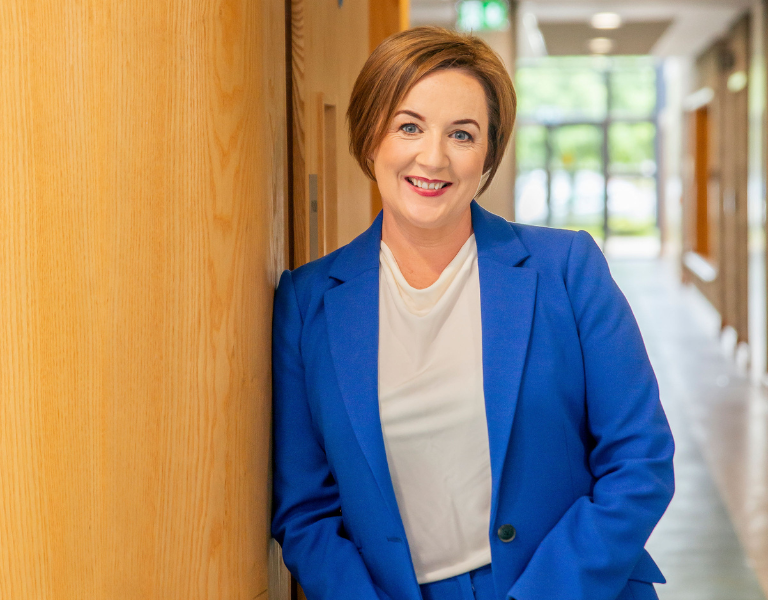A lot of small businesses and startups focus all their attention on acquiring new customers but this can be a lot more expensive than keeping the ones you have.
By creating a great customer experience (CX) strategy you can increase customer loyalty, encouraging them to become repeat purchasers, advocate for your business, and recommend you to their friends and family.
This guide is based on a webinar we hosted with customer experience experts Julian Douglas and Michael Killeen from the CX Academy. It will take you through what CX is, how it can benefit your business and a framework you can use to implement a CX strategy that suits you.
What is the CX Academy?

What is customer experience (CX)?
Customer experience is the overall impression customers get of your brand throughout their whole buyer journey, from the pre-purchase stage to purchase and beyond.
Customer experience focuses on how you make your customers feel when they are dealing with your business and the emotions you bring out in them. The goal of a great customer experience is creating a loyal customer base who will come back and purchase from your business again and again. These kinds of customers are also more likely to recommend you to their families and friends.
Why customer experience is important for your business?

If your customers feel great about your business, they’ll tell others

Great CX can make your customers feel like you care about them

Great CX can help differentiate your business from competitors
The impact of great customer experience
By focusing on improving your customer experience you can deliver short-term, medium-term, and long-term effects.
Short term
- Customers will repeatedly purchase from your business
- Companies that perform well in customer experience tend to have customers that are more likely to purchase and try their other products
- Customers will be less price-sensitive since people are usually willing to pay more for great service
- Customers will promote your business through positive word-of-mouth
Medium term
- The cost to acquire new customers will become lower since you can rely more on positive word-of-mouth rather than expensive marketing campaigns to promote your business
- When you make it easy for customers to do business with you, they will contact you less with complaints
- You will create a stable customer base who will become repeat buyers – companies that perform well in customer experience are more likely to keep doing business with you
- You will be able to charge higher prices for great service and still maintain high sales because customers are willing to pay more for great services
- You’ll build a positive reputation for your business and make customers want to recommend your business
Long term
- Companies that focus on creating a good customer experience tend to be more profitable than those that don’t
- By creating a stable base of loyal customers, you can create a steady flow of sales. This can help with your cash flow management
- Loyal customers will also have a higher lifetime value. This means they will be worth more to your business over time because they’ll buy from your business again and again
- Customer experience strategy doesn’t just benefit customers. By focusing on creating great experiences for customers you can give your employees purpose and make them take pride in their work. This should lead to higher employee retention

The customer experience framework
-
I trust you – you build trust in everything you do with me.
For example, Nissan will let customers know if their tire pressure is low and fix it even if this isn’t the service they came in for. This makes their customers trust that they care about customer safety.
-
You fix things – when things go wrong you fix them brilliantly.
For example, a common complaint Dominos pizza used to have was that customers didn’t know how long their order would take. They created a tracking app to allow customers to track the progress of their order.
-
You deliver on your promise – you manage, meet and exceed expectations.
For example, Pataggonia is a clothing brand that promises to help people look after the environment. To deliver on this promise they encourage customers to send their gear to them for repair rather than buy new items. Exceeding customer expectations can be simple – by telling a customer you’ll reply to their email by Friday and instead replying by Thursday you will have exceeded their expectations.
-
You get me – you genuinely understand what it’s like to be in my shoes.
For example, JetBlue is an airline that shows it understands the frustrations of being a parent travelling with small children. On Mother’s Day they offered all passengers a discount if one of the children on board cried during the flight. This meant parents didn’t have to worry about frustrating other passengers if their child cried.
-
You know me – you treat me like an individual and understand my needs.
People’s favourite word in the English language is their name – if you’re able to greet each of your customers by name, it makes them feel like you know them as an individual.
-
You make it easy – you make it easy for me to do business with you.
For example, if you want to buy clothes from Amazon Prime, they will send you up to 15 items to try on and come collect the items you don’t want. This makes it easier for their customers to find the best products for them.
Measuring the results of your customer experience stategy
Part of customer experience management is measuring how your CX strategy is performing.
This involves collecting customer feedback and having open communication channels to understand customer needs and pain points.
For example, many businesses have a customer support team people can call with their feedback.
Digital channels like social media or website live chat can give you access to real-time feedback from your customers.

What happens when customer experience goes wrong?
Part of creating a customer experience strategy is knowing how to deal when things go wrong, and your customers complain. For example:
- Most customers won’t tell you if something is wrong. Instead, they’ll just leave your company
- An unhappy customer can tell between 9 and 15 people about a bad experience. In comparison, a happy customer might only tell 3 people about their experience
- It takes around 12 good experiences to make up for one bad one
- Most customers are less likely to buy from a company that doesn’t reply to complaints – this can make them feel like a company doesn’t care about them
By responding to your customer’s complaints and dealing with them you can turn a bad customer experience into a good one – you will make your customers feel like you care about their experience as an individual.
Key takeaway
Having a superior customer experience strategy can help you increase customer satisfaction, and brand loyalty which can help you increase profits over time.
The CX Academy sets the global standard for CX qualifications in
over 70 countries. They can help you create and implement a customer experience strategy that suits your business. Talk to julian@thecxacademy.org today to see how to get started.
Our team can help you at any stage of your business journey, whether you are setting up or growing. If you have any questions about setting up or running your business in Ireland talk to us about how we can help you today.
#BusinessGrowth webinar series


